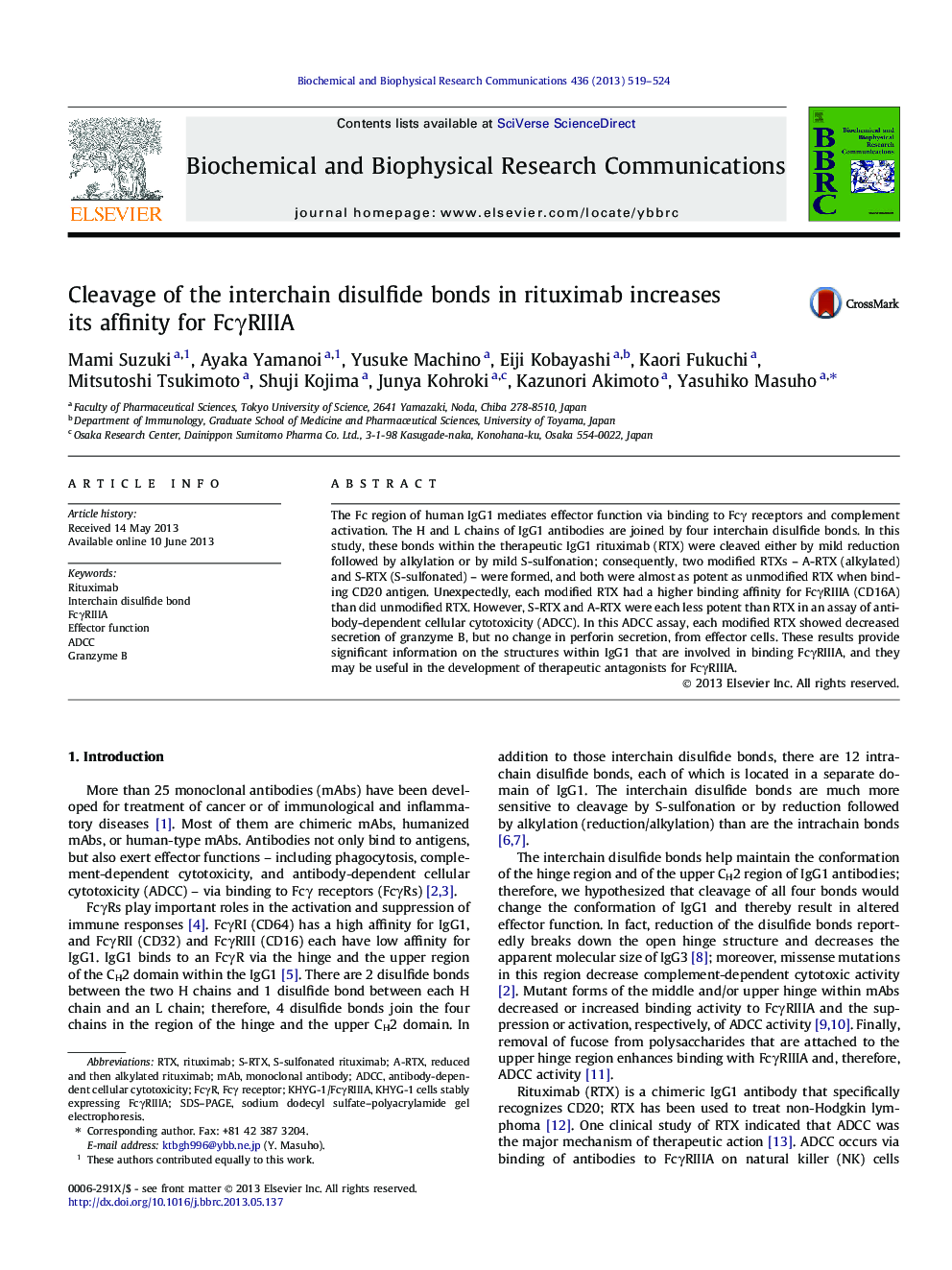| Article ID | Journal | Published Year | Pages | File Type |
|---|---|---|---|---|
| 10758787 | Biochemical and Biophysical Research Communications | 2013 | 6 Pages |
Abstract
The Fc region of human IgG1 mediates effector function via binding to Fcγ receptors and complement activation. The H and L chains of IgG1 antibodies are joined by four interchain disulfide bonds. In this study, these bonds within the therapeutic IgG1 rituximab (RTX) were cleaved either by mild reduction followed by alkylation or by mild S-sulfonation; consequently, two modified RTXs - A-RTX (alkylated) and S-RTX (S-sulfonated) - were formed, and both were almost as potent as unmodified RTX when binding CD20 antigen. Unexpectedly, each modified RTX had a higher binding affinity for FcγRIIIA (CD16A) than did unmodified RTX. However, S-RTX and A-RTX were each less potent than RTX in an assay of antibody-dependent cellular cytotoxicity (ADCC). In this ADCC assay, each modified RTX showed decreased secretion of granzyme B, but no change in perforin secretion, from effector cells. These results provide significant information on the structures within IgG1 that are involved in binding FcγRIIIA, and they may be useful in the development of therapeutic antagonists for FcγRIIIA.
Keywords
Related Topics
Life Sciences
Biochemistry, Genetics and Molecular Biology
Biochemistry
Authors
Mami Suzuki, Ayaka Yamanoi, Yusuke Machino, Eiji Kobayashi, Kaori Fukuchi, Mitsutoshi Tsukimoto, Shuji Kojima, Junya Kohroki, Kazunori Akimoto, Yasuhiko Masuho,
